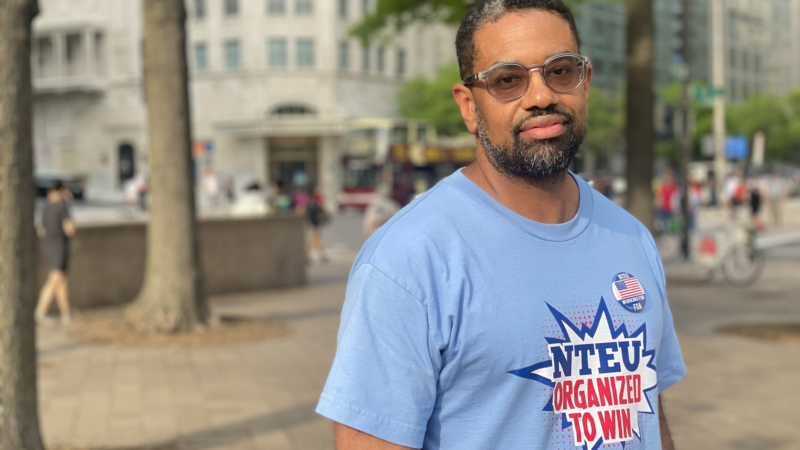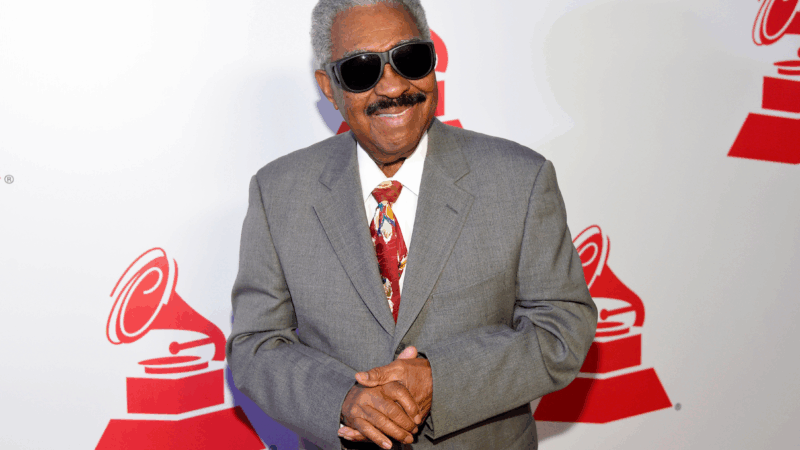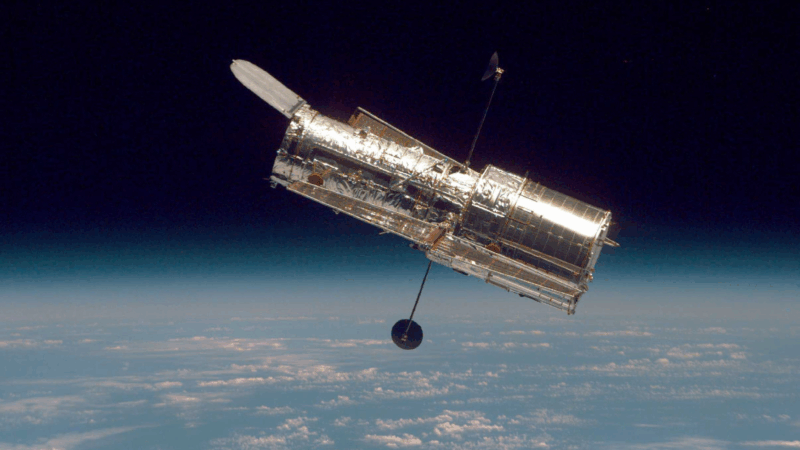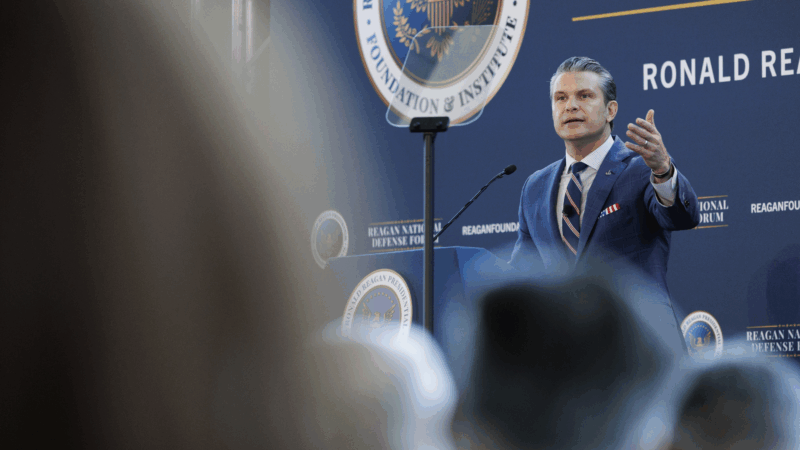Federal employee unions fight for survival as Trump tries to eviscerate them
By late March, Anthony Lee should have gotten a heads up that mass layoffs at the Food and Drug Administration were about to begin.
Instead the union president found out when he started getting panicked calls early one morning.
Employees were learning they were being fired while swiping their badges to get into work. A green light meant go. A red light meant stop.
“For dozens, hundreds of employees, it just went red and they weren’t able to enter the building,” Lee says. “That’s the way a lot of people did find out that their federal service was ending.”
Lee is president of NTEU Chapter 282, the union representing close to 9,000 FDA employees. Under the union’s collective bargaining agreement, the government is required to provide advance notice of any reduction in force.
But the Trump administration gave no such notice. Nor did it consult with Lee when it ended the union’s telework agreement.
“Basically we’ve been ignored,” says Lee.
Attacks on unions “exponentially worse”
President Trump’s antipathy toward federal sector unions is well known. Still, Lee says Trump’s attacks on unions now are “exponentially worse” than in the president’s first term.
“Even our ability to exist in the federal workplace — to be able to represent employees — is threatened by this administration,” he says.
Trump’s efforts to slash the federal workforce by hundreds of thousands of workers could decimate union bargaining units. And even where workers remain, he has moved to end the right to union representation for wide swaths of the workforce.
In late March, Trump issued an executive order ending collective bargaining rights for most federal workers, citing a provision in federal law that gives presidents the authority to do so at agencies that have national security as a primary mission.
Already, employees at agencies such as the CIA, the FBI and the National Security Agency have no collective bargaining rights.
Trump’s executive order went much further, sweeping up a broad array of agencies those exclusions have never applied to, including the Environmental Protection Agency, the Department of Veterans Affairs and the FDA.
Multiple lawsuits are challenging that order. In late April, a federal judge issued an injunction, blocking it for now, but the Trump administration has appealed that decision.
Collective bargaining as a check on presidential power
Trump has argued that having to negotiate with unions over workplace matters impedes his ability to manage the government as he sees fit.
Some would say that’s by design.
In a New York University Law Review article, Nicholas Handler, an associate professor of law at Texas A&M School of Law, argues that collective bargaining serves as a check on presidential power. The binding agreements that unions negotiate with federal agencies over personnel matters such as working conditions, performance reviews, and grievance procedures “restrain and reshape the President’s power to manage the federal bureaucracy,” he writes.

Civil servants did not always have this leverage. In the first half of the 20th century, even as labor unions gained strength elsewhere, there was a fear of giving federal workers too much say over how the nation’s laws were carried out. After all, civil servants serve the American people.
As such, federal employees have never had the right to strike. They also can’t negotiate over wages.
A recruiting crisis led to a turning point
But in the early 1960s, the federal government was facing a labor crunch. It needed scientists, economists and lawyers to staff growing agencies, but it couldn’t pay big salaries. What it could offer was stability, job protections, and — after President John F. Kennedy signed a 1962 executive order — the right to unionize.
“Collective bargaining becomes an attractive tool for presidents to recruit people into the federal civil service and take advantage of a lot of those highly skilled workers that otherwise might be difficult to recruit,” says Handler.
Congress later codified those labor protections in the Civil Service Reform Act of 1978, asserting that the right to organize and collectively bargain “contributes to the effective conduct of public business” and “safeguards the public interest.”
Through the law, Congress also created for itself and the courts a way to police the executive branch, Handler says.
Consider a scenario in which a president wants to weaken a particular agency, such as the EPA. One way to undermine the agency would be to make life for EPA workers miserable, he explains. Collective bargaining gives those employees a way to push back, to preserve their ability to carry out their agency’s mission as Congress intended.
Now, Trump says those labor rights Congress established in 1978 make federal workers unaccountable.
“The CSRA enables hostile Federal unions to obstruct agency management,” states a White House document explaining his executive order. “This is dangerous in agencies with national security responsibilities.”
Losing protections that made the jobs worthwhile
Lee, a 23-year veteran of the FDA in addition to being union president, worries that if Trump gets his way, workers will lose the stability and protections that made working for the government worthwhile.
He’s especially concerned that scientists will become vulnerable to political pressure. Under the union contract, employees who review food ingredients, drugs and medical devices have a right to flag safety or efficacy concerns without fear of retribution.
“It remains to be seen as to whether or not they’re going to allow employees to do the job that the public expects, protecting and promoting the health and safety of the public,” Lee says.
A debate over efficiency

One of Trump’s repeated complaints is that unions make it too hard to get rid of poor performers. Many union contracts spell out lengthy processes for doing so.
But others contend unions help make the government run more smoothly.
“Our collective bargaining agreement is a huge efficiency boost for the government,” says Armando Rosario-Lebron, a vice president of the National Association of Agriculture Employees, which represents employees of the U.S. Department of Agriculture’s Animal and Plant Health Inspection Service.
His bargaining unit includes people who are tasked with keeping invasive pests and plants out of the country, work that requires a lot of overtime. Rosario-Lebron says the union largely manages that.
“You have some employees who want as much overtime as possible to earn as much income as they can. You have other employees who don’t want to be overworked to death, so to speak,” he says.
Figuring out how to assign overtime and being the liaison between management and employees probably represent the union’s biggest savings to the government, says Rosario-Lebron.
“I know that a lot of managers love that,” he says.
Rosario-Lebron says he tries to resolve most disputes outside the formal grievance process. He says there are plenty of times he’s advised employees against pursuing complaints he sees as frivolous.
“I don’t recommend you go down that path because it’s not going to end well for you,” he says he’s told them.
Employees are more likely to listen to the union on such matters, he says.
He has a warning for the Trump administration: Get rid of the union and management will be on its own.
Tributes, not politics, play center stage as Trump hosts the Kennedy Center Honors
President Trump said he was closely involved with picking the honorees, and on Sunday he became the first president to host the Kennedy Center awards ceremony.
Thailand launches airstrikes along border with Cambodia as tensions reignite
Both sides accused the other of breaking a ceasefire that halted fighting earlier this year. Longstanding border disputes erupted into five days of combat in July that killed dozens.
Rafael Ithier, a legend of salsa music, dies at 99
The pianist, composer and arranger spent more than six decades turning El Gran Combo into one of the premier salsa institutions of Latin America and beyond.
Light from satellites will ruin majority of some space telescope images, study says
Astronomers have long been concerned about reflections from satellites showing up in images taken by telescopes and other scientific instruments.
Defense Department is reviewing boat strike video for possible release, Hegseth says
In a speech on Saturday, Defense Secretary Pete Hegseth defended the strikes, saying: "President Trump can and will take decisive military action as he sees fit to defend our nation's interests."
Bama, Miami in, Notre Dame out and Indiana No. 1 in College Football Playoff rankings
Nobody paying attention for the past 24 months would be surprised to see Indiana – yes, Indiana – leading the way into this year's College Football Playoff.









